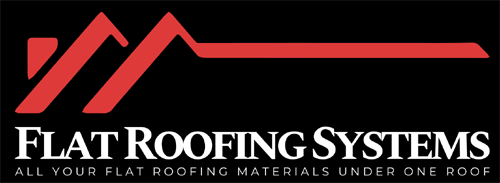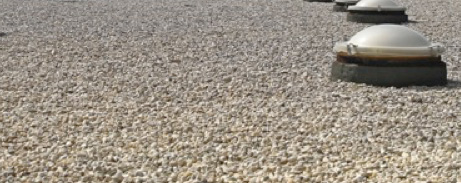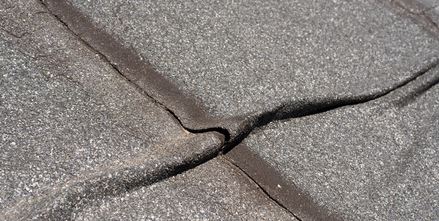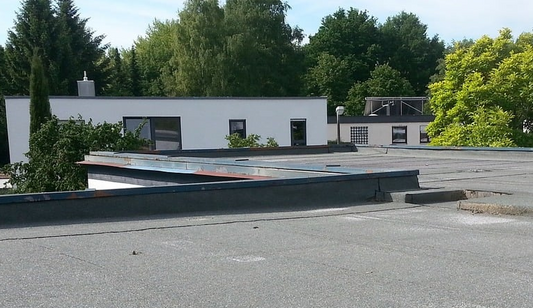You're looking for a roofing solution that's durable, cost-effective, and versatile, which is where GRP roofing comes in - a type of roofing made from Glass Reinforced Plastic that's resistant to corrosion and high temperatures, and can last at least 30 years.
GRP roofing originated in the UK in the 1940s and has since been widely adopted in various industries for its exceptional durability, low maintenance, and cost-effectiveness.
With its lightweight nature and moulding capabilities, GRP roofing offers a seamless design that reduces the risk of leaks and withstands harsh weather conditions, making it an attractive option for your roofing needs - and there's more to explore about its benefits and applications.
Definition and Properties
GRP stands for Glass Reinforced Plastic, a versatile building material that boasts exceptional strength and lightweight properties is essential. This unique combination of attributes makes GRP an ideal choice for various applications.
GRP is also known as Fibreglass or FRP, and it's resistant to corrosion and can withstand high temperatures. These properties make it an excellent option for construction, aerospace, and automotive industries.
When considering GRP roofing, you'll appreciate its durability and cost-effectiveness. A correctly installed GRP roof can last at least 30 years, making it a reliable choice for your building needs. Its lightweight nature also reduces the structural load, allowing for more design flexibility.
Additionally, GRP's resistance to corrosion and high temperatures assures that it can withstand harsh environmental conditions. As you dive deeper into the world of GRP roofing, you'll discover the numerous benefits this material has to offer.
With its exceptional properties, GRP roofing is a compelling solution for your building project.
History and Versatility
GRP roofing originated in the UK in the 1940s, where it was first utilized in the boating and marine industry. Initially, its exceptional properties made it an ideal material for building boats and yachts. However, its versatility and benefits didn't go unnoticed, and soon GRP was widely adopted across various industries like construction, aerospace, and automotive.
One of the key reasons for its widespread adoption is its moulding capabilities. GRP offers vast possibilities for creating complex structures, making it a go-to material for architects and engineers.
GRP is also known by other names, such as Fibreglass, Composite Plastic, and FRP. Despite its different names, its properties remain the same - it's lightweight, strong, and resistant to corrosion. Its ability to withstand high temperatures and its long-lasting durability, with a lifespan of at least 30 years, make it an attractive option for many applications.
Benefits of GRP Roofing
GRP roofing offers several benefits, from its exceptional durability to its low maintenance requirements. As a lightweight and strong material, GRP fibreglass roofing can withstand harsh weather conditions and last at least 30 years, making it a reliable choice for flat roofing.
Its resistance to corrosion adds to its durability, ensuring your roof remains in top condition for years to come. You'll also appreciate the versatility of GRP roofing, which can be moulded into complex structures to fit your unique needs. Plus, it can withstand high temperatures, reducing the risk of damage or degradation.
With GRP roofing, you can say goodbye to frequent maintenance checks, as it requires minimal upkeep. This means you can enjoy a hassle-free roofing experience, focusing on more important things in life.
Cost-Effectiveness Analysis
Beyond its impressive benefits, GRP roofing also offers a significant cost advantage over traditional roofing materials, making it a smart investment for homeowners and businesses alike.
You may need to pay a bit more upfront, but it's an investment that will pay off in the long run. With a lifespan of at least 30 years, GRP roofs require minimal maintenance, which means you'll save on repair costs down the line. Plus, the seamless and joint-free design reduces the risk of leaks and water damage, saving you even more money.
GRP roofing may seem more expensive at first, but its durability and low maintenance needs make it a cost-effective choice in the long run. By choosing GRP roofing, you'll avoid the frequent repairs and replacements that come with traditional materials, freeing up your budget for more important things.
Material Overview and Benefits
As a highly versatile and robust building material, GRP (Glass Reinforced Plastic) has revolutionized the construction industry with its unique combination of strength, durability, and corrosion resistance.
What makes GRP so special? For starters, it's extremely lightweight, making it an ideal choice for flat roofing solutions. Additionally, GRP roofs can withstand high temperatures and are resistant to corrosion, ensuring they remain in top condition for years to come.
Some of the key benefits of GRP roofing include:
- Long-lasting: With a lifespan of at least 30 years, GRP roofs are a cost-effective solution for your building needs.
- Versatility: GRP offers vast moulding capabilities, making it perfect for complex structures and unique designs.
- Low maintenance: GRP roofs are easy to clean and maintain, reducing the need for frequent repairs and replacements.
GRP is a material that's not only strong and durable but also adaptable to your specific needs. With its impressive list of benefits, it's no wonder it's become a go-to choice for construction projects of all sizes.
GRP vs Felt Roofing
When choosing between GRP and felt roofing, it's clear that GRP stands out as a superior option, offering a significantly longer lifespan and reduced maintenance needs. With an expected lifespan of 50 years, GRP roofing far surpasses felt roofing, which typically lasts between 10-30 years.
Felt roofing can also be prone to condensation, mould, and rot, issues that GRP roofing doesn't face.
Another remarkable advantage of GRP roofing is its seamless and malleable nature during installation, making it a more durable and resistant option. In contrast, felt roofing is vulnerable to cracking and damage from foot traffic.
As a result, GRP roofing is the preferred choice among professionals due to its durability, low maintenance, and seamless finish. By opting for GRP roofing, you'll enjoy a longer-lasting solution that requires less upkeep, saving you time and money in the long run.
With its numerous benefits, it's no surprise GRP roofing is becoming the go-to choice for many builders and homeowners.
Health and Safety Considerations
You must prioritize health and safety considerations when working with GRP roofing materials, as they can pose significant risks to your well-being if not handled correctly.
Fibreglass roofing installation involves hazards related to fibreglass, polyester resin, and glass chopped strand mat. It's essential to take necessary precautions to prevent potential health risks associated with these materials.
To maintain a safe working environment, you should:
- Conduct risk assessments and COSHH (Control of Substances Hazardous to Health) to handle fibreglass materials safely
- Receive training in manual handling, and working at height to minimize risks
- Access relevant information from the HSE (Health and Safety Executive) website for best practices in construction health and safety
Advantages of GRP Fibreglass
With the necessary safety measures in place, you can now enjoy the benefits of GRP fibreglass roofing, which provides a multitude of advantages that make it an appealing choice for various applications.
One of the most significant advantages is its lightweight and long-lasting nature, offering superior water resistance and seamless construction. You'll also value its exceptional UV resistance, which guarantees the roofing material remains intact even in challenging weather conditions.
Furthermore, GRP fibreglass roofing offers enhanced thermal insulation, reducing heat loss and energy expenses. Moreover, you can personalize the roofing to suit your aesthetic preferences with a wide range of color options available.
Advanced GRP roofing technology takes it a step further, integrating intelligent features for improved performance. With GRP fibreglass roofing kits, you can experience flexibility and durability for various applications, making it a perfect choice for residential and commercial constructions, especially for flat or low-pitched roofs.
Installation and Maintenance
Properly installed GRP roofing systems require a meticulous layering process that involves applying fibreglass matting saturated with polyester resin to achieve a strong, seamless finish. This process guarantees a waterproof and durable surface that can withstand environmental elements.
As a homeowner, you'll want to maintain your GRP roofing system to prevent common issues like poor installation, impact damage, blistering, delamination, and ponding water.
To keep your GRP roofing in top condition, you should:
- Regularly inspect your roof for signs of damage or wear
- Clean gutters and drains to secure proper water flow
- Avoid walking on the roof to prevent damage
Closing Words
You've now got a decent understanding of GRP roofing, its benefits, and its advantages over traditional felt roofing.
With its durability, versatility, and cost-effectiveness, it's no surprise GRP roofing has become a popular choice for many building projects.
By opting for GRP roofing, you can enjoy a low-maintenance, weather-tight solution that will stand the test of time.
So, why not contemplate GRP roofing for your next project? Take a look at our range of fibreglass flat roofing kits




